"Before leaving a bunker, players should carefully fill up and smooth over all holes and footprints made by them and any nearby made by others. If a rake is within reasonable proximity of the bunker, the rake should be used for this purpose."
USGA Rules of Golf, Section I
Raking bunkers after your shot often seems pointless, after all you are out of the bunker and onto the green now. However its is important that the group behind yours finds the course in the same shape or better condition than you found it. The best part of fixing the bunkers is the example you set for the players to follow, and hopefully they will follow your lead.
The video below explains the proper way to enter and exit bunkers as well as how to rake your footprints behind you without moving too much sand. The most important aspect of this video is where to enter and exit the bunker.
Treat the course as if you are playing behind your group. Repair ball marks, rake bunkers and fix your divots.























